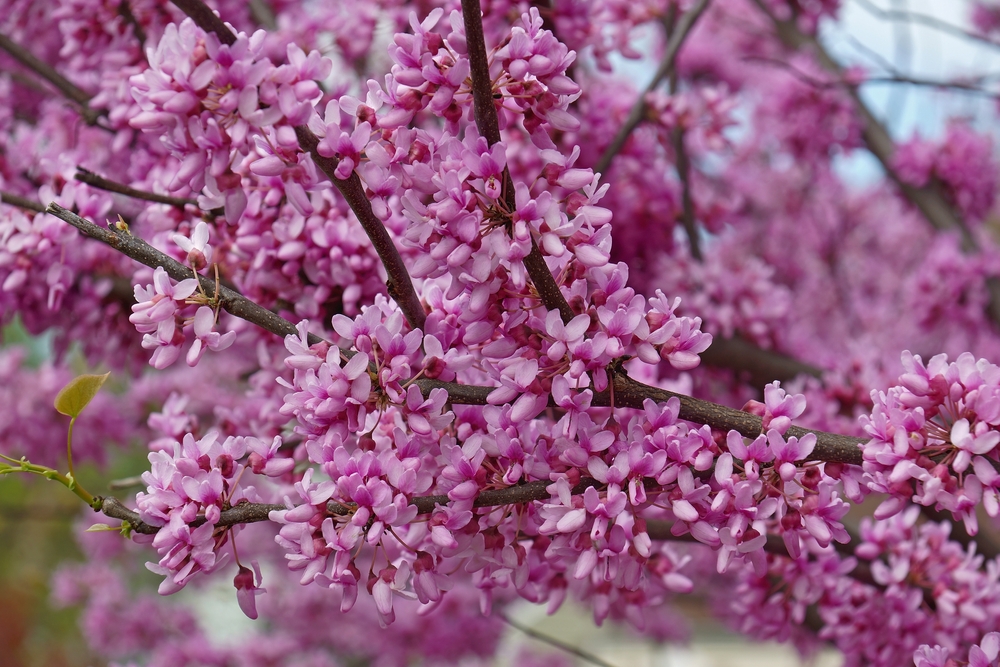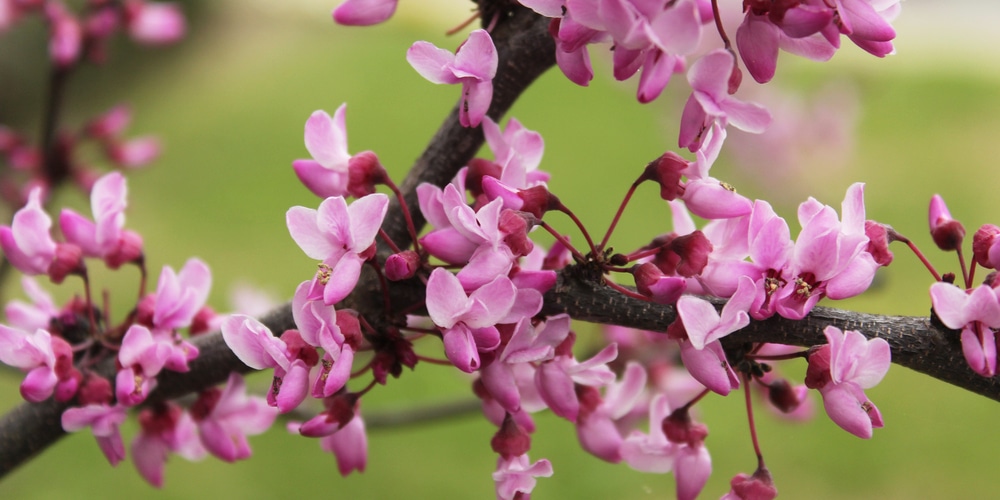Redbud trees, also known as Judas trees, are one of the most beautiful trees you can add to your home and property, but like any other plant can come with pros and cons. So let’s look at why we love them and why they can be more complicated than they’re worth.
Pros of Redbud Trees

Redbud trees have plenty of advantages if you plant one in your yard. They’re beautiful, naturally drought-resistant, and can help support the natural ecosystem.
Redbud Trees are Beautiful
The tree’s beauty feels a little cliche to put first in a list of pros, but it’s so accurate that I had to include it. These trees are simply gorgeous when they bloom and attract everyone’s attention.
When flowering, redbud trees produce thousands of tiny pink flowers and can maintain their blooms from April into June.
Naturally Drought-Resistant
Thanks to its naturally high drought tolerance, you won’t need to worry about heavily watering your redbud tree thanks to its naturally high drought tolerance.
Once the tree is full-sized and established, it has a low water requirement. This drought-resistance makes it an excellent choice for arid locations that don’t receive much rainfall or have a naturally low water table.
Attracts Pollinators
Thanks to the thousands of tiny blooms, you’re sure to see plenty of bees and butterflies in the springtime! Because these trees bloom so early and with such a bounty of flowers, they’re an excellent resource for natural pollinators to begin their season in April instead of May. Who doesn’t love a good bumblebee?
A Native Species
Many ornamental plants and trees can be classified as invasive in North America because they’ve been imported from other countries, making them a potential hazard to the environment if they spread. Not Redbud trees! They’re native across North America and help support the existing natural ecosystem.
A Burst of Fall Color
Your redbud tree will look like any other tree along the block come summertime. The heat kills the blooms off, and your tree will grow dark green leaves that are either heart-shaped or round.
However, your tree will give you another burst of color in regions that experience autumn when the leaves turn a light orange.
Cons of Redbud Trees
A beautiful tree can sometimes be too good to be true, but it mostly depends on your preferences on how much work you want to put into this tree.
Shorter Life Spans
Redbud trees only live around 20 to 30 years, meaning you may plant the tree in your yard and live to see it die. Therefore, they are not great for long-term landscaping projects but can be wonderful additions in smaller spaces where large trees can’t grow.
Only Bloom In Spring
Redbud trees only bloom during the springtime, so you’ll have to enjoy the flowers while they’re there. Spring is the only season where your redbud tree will grow. Otherwise, the tree will be mostly dormant for the rest of the year until it loses its leaves in autumn.
High Maintenance
In the first 1 to 3 years of life, your redbud tree will require a significant amount of water to grow. Many homeowners purchase older, established saplings because of this water requirement. These little trees will quickly rack up your water bill!
The trees can attract aphids (which can be disastrous to your other garden plants), and you can trim them to encourage upward growth. Otherwise, your tree can grow outwards instead of up.
Summary
There are pros and cons to redbud trees, but it comes down to what you’re looking for in a tree. If you want a tree that’s on the smaller side to accent part of your yard with beautiful colors, a redbud tree is perfect.
However, if you want a low-maintenance tree that you can plant and forget about, you may want something a little heartier (or purchase an older redbud).
